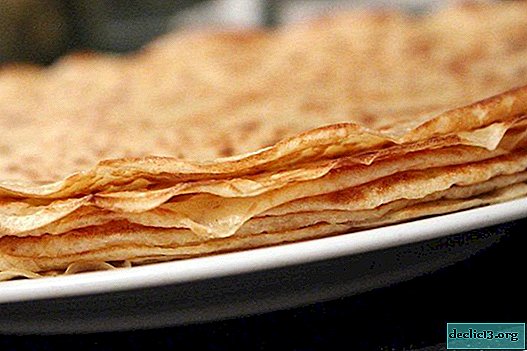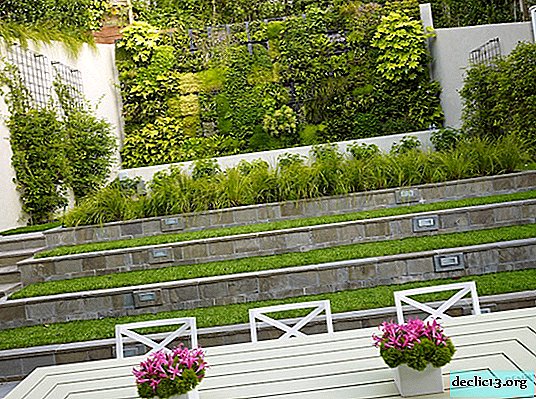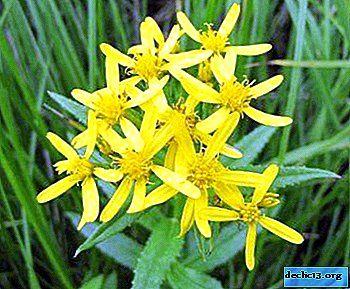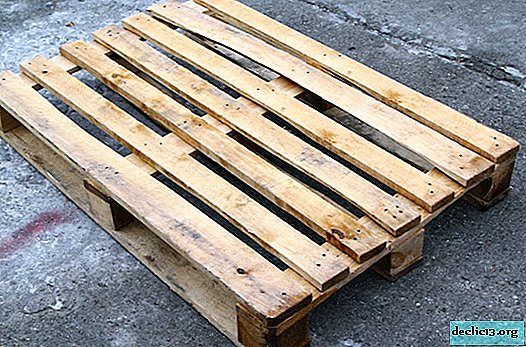What if the radish goes to the arrow and why is this happening? Is it possible to save the crop?

Radish refers to cold-resistant early ripe garden crops. An undemanding plant care does not like sudden changes in temperature difference, reacts negatively to excess and lack of moisture, is sensitive to light.
Violation of growing conditions leads to darting, lack of fruit or the formation of inedible root crops. How this can be avoided and why this most often happens, will be discussed later in the article.
What does it mean - radish goes in the arrow?
In the event of adverse circumstances, the underground part of the plant does not develop, and the forces are sent to continue the genus:
- the formation of inflorescences on an elongated arrow;
- seed ripening.
The same thing happens when polluted by insects, by the wind.
In order to collect their own seeds, the flowering stage is necessary, but to achieve a crop in the presence of this factor will not work.What does “elongated radish” look like?
With the active growth of the shooter and lush foliage, the radish turns out to be long, narrow. Nutrients go to the top and stems. The root crop becomes thin, curved, similar to a tail.
Why does this happen and does it affect the crop?
Taste qualities of fruits are lost. Radish becomes bitter or tasteless. The fruit of a flowering plant is wooden on the outside, loose, cotton inside.
Most often, radishes are pulled for the following reasons:

- Low-quality planting material.
- The choice of varieties zoned for the region with other climatic conditions.
- Violation of the timing of sowing.
- Excessive illumination for more than 10-12 hours.
- Air temperature. Radish does not like hot weather and does not tolerate frosts below -6. Comfortable temperature for the ripening of radishes - +18 - +20 degrees.
- Wrong watering. Optimum soil moisture -70-80%.
- Soil composition. Heavy clay soil is not suitable for fruit setting.
- Too dense landing. In close proximity, the plant lacks moisture, light and nutrients.
- Insect pests. Cruciferous flea, a gluttonous insect from the family of leaf beetles, is dangerous for the development of young radish sprouts.
- The disease.
- Deficiency or excess of nutrients.
Necessary:
- When planting, select large seeds. Plants grown from small seeds often go to the arrow.
- Buy seeds at specialized stores. Shelf life should not exceed one year.
- Symptoms of the disease are already visible on the seeds.To prevent the development of infection, it is recommended to disinfect planting material in a weak solution of potassium permanganate or aloe juice.
What if the plant went into the arrow when growing?
When signs of stretching appear, the following measures are recommended.
Houses
- Stop feeding.
- Mix soil with wood ash.
- Constantly moisten the soil.
- Remove sand if added during planting.
On the street
- Eliminate the crust that forms on the surface of the soil.
- Avoid weathering of the upper fertile soil layer.
- Do not loosen or weed near the plant.
In the greenhouse
- Monitor lighting, daylight hours.
- Maintain temperature at around +21 degrees.
- Monitor air humidity (70-75%).
- Maintain soil moisture within 70-72%.
Preventative measures
 Radish grows well after potatoes, cucumbers, tomatoes, and legumes. It is not recommended to plant the crop on the site of cabbage, turnip, radish, rutabaga and in their immediate vicinity.
Radish grows well after potatoes, cucumbers, tomatoes, and legumes. It is not recommended to plant the crop on the site of cabbage, turnip, radish, rutabaga and in their immediate vicinity.
- At the first stage, it is recommended to select seeds: for planting, expired, feeble to the touch, damaged, unripe, moldy touches are not suitable.
- The planned harvest will be given by varieties and hybrids specially bred for a specific climatic zone.
- Optimum sowing time: from early April to mid-May.
- In order to avoid overcooling, the beds are covered with a plastic film until the entrances appear.
- It is necessary to provide daily moderate watering.
- For landing, you should choose windless, well-lit areas without shading. After the emergence of seedlings, they must be covered with a lightproof film for 2–3 weeks from 6 p.m. to 8 p.m. and from 6 a.m. to 8 a.m.
- Leave at least 4-5 cm between plants and 10-12 cm between rows.
- In order to prevent the occurrence of insect pests, plants are poured with acidified water (1 tablespoon of citric acid per bucket of water) and the leaves are regularly sprayed with clean water.
- When the first signs of the disease occur, infected plants are removed, planting and soil are treated with fungicide solutions.
To prevent radish stretching, it is important to know the causes and methods of preventing the phenomenon. Analysis of options, determination of actions for plant care, experiments with planting material will help to identify optimal conditions and choose a suitable variety of radish with minimal cases of shooting. If there are signs of departure in the arrow, you can take action and fight for the crop. A little attention, timely watering will ensure the collection of sweet, juicy, crispy radishes.
Useful video
In addition to the article, we suggest watching an informative video about radish shootings:

















